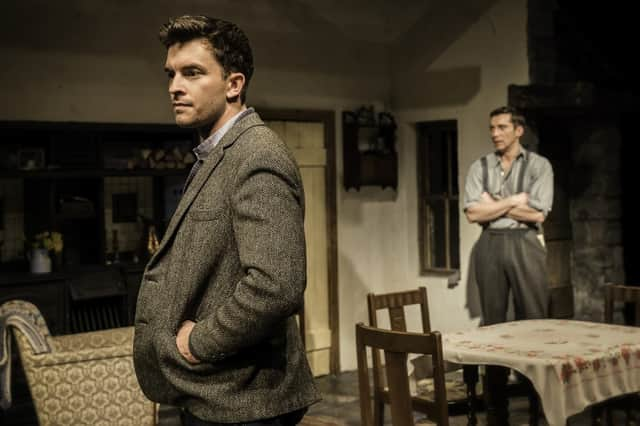REVIEW: The York Realist at Sheffield Crucible


The story of love between farmer George - a wonderfully honest sparkly-eyed portrayal by Ben Batt - and theatre director John reveals much about class and sexuality in the early 1960s.
First performed in 2001, director Robert Hastie’s revival uses an unusually simple set to tell a heartbreaking tale - recreating a farm labourer’s cottage beneath a marvellous Yorkshire landscape.
Advertisement
Hide AdAdvertisement
Hide AdJohn, an engaging and nicely judged performance from Jonathan Bailey, is from cosmopolitan London, George from working class Yorkshire.
But from the opening scene it is clear that it is George who is more confident, at ease with his sexuality. Despite the fact that at the time, gay sex was still illegal.
John is more hesitant, even though there would have been greater opportunities for people to be openly gay in the capital.
They fall for each other when George appears in an amateur mystery play production on which John is assistant director.
Advertisement
Hide AdAdvertisement
Hide AdBut will they decide to live together in Yorkshire or London? They appear to come from two different worlds.
George’s mother, played with lovely warmth by Lesley Nicol (a familiar face from Downton Abbey) who lives with him, seems blissfully unaware of his relationship with John, who stays over because “the last bus has gone”. But is she really?
Doreen (nicely portrayed by Katie West), who fancies George, probably has an idea of what is going on and feels threatened.
In a fine cast the other three characters, George’s friend Arthur, Barbara, and their son Jack are played by Matthew Wilson, Lucy Black and Brian Fletcher.
Advertisement
Hide AdAdvertisement
Hide AdAs they return after the opening night, the family and friends are gathered round the kitchen table. The scene betrays what no one says. It reveals a more complex picture than the stereotype of isolated gay men and lesbians facing unremitting hostility. That did happen. But in close knit communities there were forms of acceptance of people who had ‘special friends’ or who for some reason were not the marrying kind.
At one point George tells a shocked John that as a teenager he had sex with Arthur after they’d had gone out for a drink looking for girls.
What threatens to keep the two apart after the death of George’s mother is more about class than sexual repression.
For John to move to Yorkshire would mean turning his back on the developing radical movement.
The play asks the question: Who is really the realist?